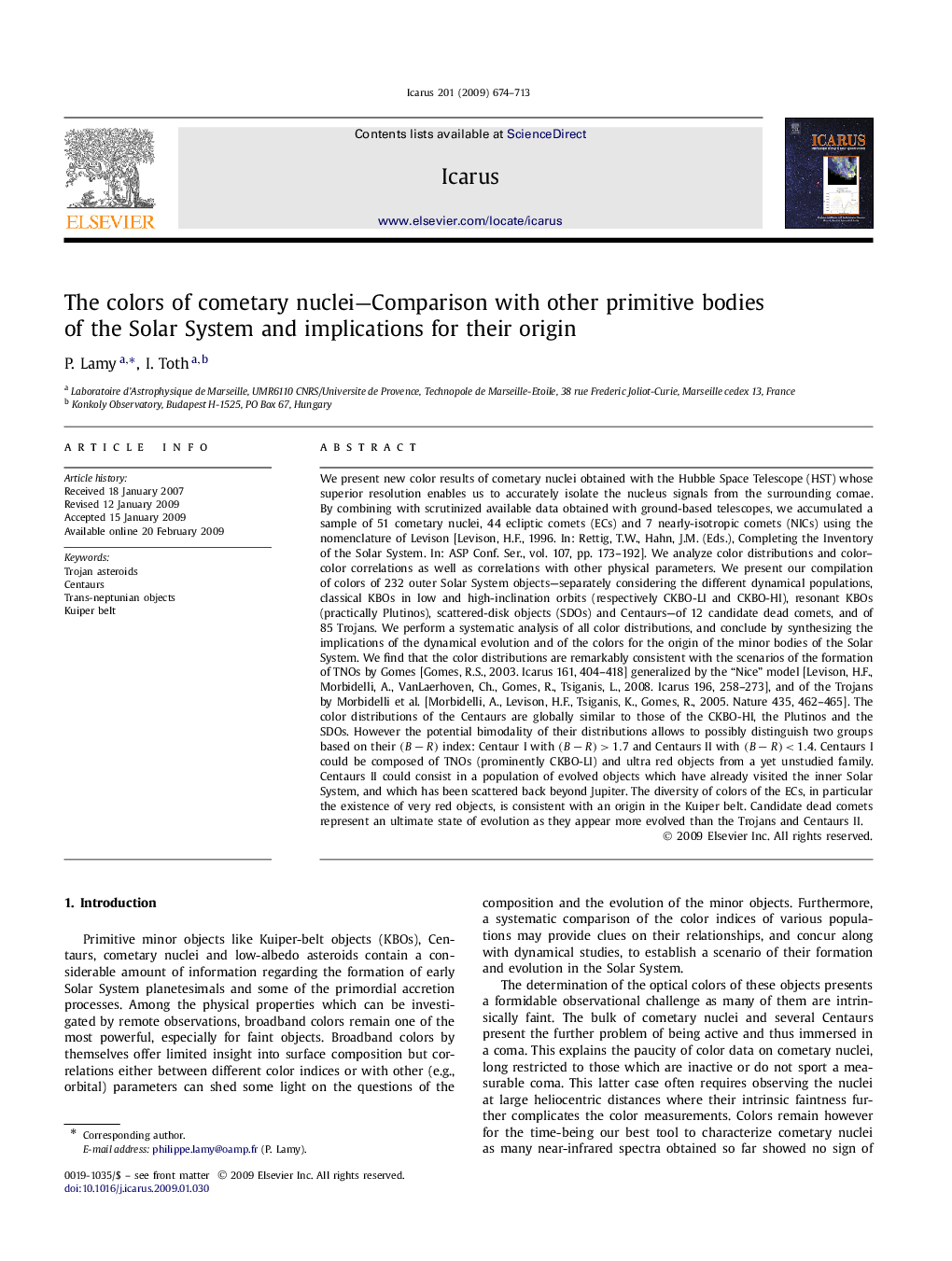| کد مقاله | کد نشریه | سال انتشار | مقاله انگلیسی | نسخه تمام متن |
|---|---|---|---|---|
| 1774122 | 1021156 | 2009 | 40 صفحه PDF | دانلود رایگان |

We present new color results of cometary nuclei obtained with the Hubble Space Telescope (HST) whose superior resolution enables us to accurately isolate the nucleus signals from the surrounding comae. By combining with scrutinized available data obtained with ground-based telescopes, we accumulated a sample of 51 cometary nuclei, 44 ecliptic comets (ECs) and 7 nearly-isotropic comets (NICs) using the nomenclature of Levison [Levison, H.F., 1996. In: Rettig, T.W., Hahn, J.M. (Eds.), Completing the Inventory of the Solar System. In: ASP Conf. Ser., vol. 107, pp. 173–192]. We analyze color distributions and color–color correlations as well as correlations with other physical parameters. We present our compilation of colors of 232 outer Solar System objects—separately considering the different dynamical populations, classical KBOs in low and high-inclination orbits (respectively CKBO-LI and CKBO-HI), resonant KBOs (practically Plutinos), scattered-disk objects (SDOs) and Centaurs—of 12 candidate dead comets, and of 85 Trojans. We perform a systematic analysis of all color distributions, and conclude by synthesizing the implications of the dynamical evolution and of the colors for the origin of the minor bodies of the Solar System. We find that the color distributions are remarkably consistent with the scenarios of the formation of TNOs by Gomes [Gomes, R.S., 2003. Icarus 161, 404–418] generalized by the “Nice” model [Levison, H.F., Morbidelli, A., VanLaerhoven, Ch., Gomes, R., Tsiganis, L., 2008. Icarus 196, 258–273], and of the Trojans by Morbidelli et al. [Morbidelli, A., Levison, H.F., Tsiganis, K., Gomes, R., 2005. Nature 435, 462–465]. The color distributions of the Centaurs are globally similar to those of the CKBO-HI, the Plutinos and the SDOs. However the potential bimodality of their distributions allows to possibly distinguish two groups based on their (B−R)(B−R) index: Centaur I with (B−R)>1.7(B−R)>1.7 and Centaurs II with (B−R)<1.4(B−R)<1.4. Centaurs I could be composed of TNOs (prominently CKBO-LI) and ultra red objects from a yet unstudied family. Centaurs II could consist in a population of evolved objects which have already visited the inner Solar System, and which has been scattered back beyond Jupiter. The diversity of colors of the ECs, in particular the existence of very red objects, is consistent with an origin in the Kuiper belt. Candidate dead comets represent an ultimate state of evolution as they appear more evolved than the Trojans and Centaurs II.
Journal: Icarus - Volume 201, Issue 2, June 2009, Pages 674–713